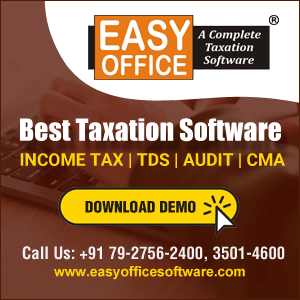Background
On 1st July 2017 the historic Indirect Tax Reform - GST was introduced which subsumed multiple Indirect Taxes such as Excise Duty, Service Tax, VAT, CST etc.
One of the strong points of GST was the elimination of cascading effect in the erstwhile regime as it offered a comprehensive and continuous chain of tax credits from the supplier's point up to the Consumer's level thereby taxing only the value added at each stage of supply chain.
However, question arises about the Tax Credits lying unclaimed with the taxpayer's immediately preceding the appointed day i.e., 1st July 2017?
As GST consolidated multiple taxes into one, it was very essential to have Transitional Provisions. The GST Act contains within it repealing enactments, which required carefully worded transitional provisions to ensure a smooth change in the legal regime and to ensure there is no impact on existing rights and liabilities along with taking care of the events during the period of transition.

The provisions contained in Chapter XX of CGST Act,2017 were beneficial for taxpayers to allow easy transition however few transitional glitches impaired its effective implementation.
Let's dive into the Transitional Provisions contained in the CGST Act.
Relevant Provisions of GST Law
The Statutory provisions applicable to Transitional Credit are provided in Chapter XX (Section 139 to 142) of CGST Act, 2017, SGST Act(s), 2017 and applicable rules are 117, 118, 119, 120, 120(A) and 121 of CGST Rules, 2017. To avail the benefit of Transitional Credits, the taxpayers were required to furnish their details in Form TRAN-1, TRAN-2 and/or as the case may be, in TRAN-3.
Out of the 4 Sections the most significant is Section 140 which has been amended twice with retrospective effect and prescribes entitlement to carry forward credit from returns filed in erstwhile regime, while Rule 117 prescribes the form and time limits for carry forward of credit.
The 4 Sections provide
- Section 139 - Migration of existing taxpayers.
- Section 140 - Transitional arrangements for input tax credit. Section 141 - Transitional provisions relating to job work.
- Section 142 - Miscellaneous transitional provisions.
- Section 140 & Rule 117 of the CGST Act, are in their own sense packers and movers of the eligible credits of the taxpayers from the erstwhile regime to the new GST regime.
- Section 140 drives through the aspects of what are the different categories of eligible credits that can be taken forward to the new regime but the method to avail the credit under the new regime has been prescribed in Rules 117 to 120 primarily under Rule 117.
The relevant rule prescribes the time limit for availing Transitional ITC by carrying it forward from the credit balance under tax legislations which have been repealed and replaced by the CGST Act.
Section 140. (1) - A registered person, other than a person opting to pay tax under section 10, shall be entitled to take, in his electronic credit ledger, the amount of CENVAT credit of eligible duties carried forward in the return relating to the period ending with the day immediately preceding the appointed day, furnished by him under the existing law within such time and in such manner as may be prescribed:"
Provided that the registered person shall not be allowed to take credit in the following circumstances, namely: —
- where the said amount of credit is not admissible as input tax credit under this Act; or
- where he has not furnished all the returns required under the existing law for the period of six months immediately preceding the appointed date; or
- where the said amount of credit relates to goods manufactured and cleared under such exemption notifications as are notified by the Government.
The transitional provisions of Section 140(1) allow a registered person to claim the CENVAT Credit carried forward in the last return under the erstwhile regime subject to certain conditions such as the credit should be admissible under the GST Regime and filing of all the returns for the period January 2017 to June 2017 i.e., six months immediately preceding the appointed date.
It presupposes that the amount of CENVAT credit of eligible duties has therefore accrued and is existing and reflected in the CENVAT credit register.
Section 140 (1) was amended twice with retrospective effect:
- The words "of eligible duties" was inserted after the letters and word "CENVAT credit" (vide CGST (Amendment) ACT, 2018) with retrospective effect from 1st July 2017.
- The words "within such time and" was inserted after the letters and word "existing law" (vide CGST (Amendment) ACT, 2018) with retrospective effect from 1st July 2017.
The term "eligible duties" is defined in Explanation 1 to Section 140 as follows:
"Explanation 1. For the purposes of 10[sub-sections (1), (3), (4)] and (6), the expression "eligible duties" means-
- the additional duty of excise leviable under section 3 of the Additional Duties of Excise (Goods of Special Importance) Act, 1957 (58 of 1957);
- the additional duty leviable under sub-section (1) of section 3 of the Customs Tariff Act, 1975 (51 of 1975);
- the additional duty leviable under sub-section (5) of section 3 of the Customs Tariff Act, 1975 (51 of 1975);
- [omitted]
- the duty of excise specified in the First Schedule to the Central Excise Tariff Act, 1985 (5 of 1986);
- the duty of excise specified in the Second Schedule to the Central Excise Tariff Act, 1985 (5 of 1986); and
- the National Calamity Contingent Duty leviable under section 136 of the Finance Act, 2001 (14 of 2001),
in respect of inputs held in stock and inputs contained in semi-finished or finished goods held in stock on the appointed day."
In short, Section 140 of the CGST Act read with Rule 117 of the CGST Rules enables a registered person to carry forward the accumulated credit under erstwhile tax legislations and claim the same under the CGST Act. In effect, it is a transitional provision as is evident both from Section 140 and Rule 117.
Section 140(2) - Capital Goods credit which has not been availed in the earlier Law
In the erstwhile regime, under CENVAT Credit Rules, the credit in respect of Capital Goods was made available in instalments, so if any Capital Goods were purchased before the appointed date i.e., 01st July 2017 and any portion of the credit had remained unavailed the same can be claimed in the GST regime by filing Table 6 of TRAN -1.
Therefore, transition provisions of Section 140(2) deal with the unavailed portion of CENVAT Credit in respect of Capital Goods under the erstwhile laws provided such credits are admissible under the GST laws. Rule 117(2)(a) of CGST Rules, 2017 specify the particulars required regarding unavailed credit to be filed on the Common Portal.
Section 140(3) - Credit of inputs in Stock under certain circumstances
The credit is available to the following registered persons:
- who was not liable to be registered under the existing law
- who was engaged in the manufacture of exempted goods or provision of exempted services
- who was providing works contract service or a first stage dealer or a second stage dealer or a registered importer or a depot of a manufacturer.
The credit of eligible duties is available in respect of:
- inputs held in stock
- inputs contained in semi-finished or finished goods held in stock on the appointed day subject to various conditions mentioned therein.
For Example: Small Scale Industry (SSI) Exemption under Central Excise had threshold limit of 1.50 Crores and that a dealer in the erstwhile regime wouldn't have taken any credit whereas in GST the threshold limit is at 20 Lacs, now in this scenario the dealer would be having certain inputs of purchases made earlier in the form of either lying as such or contained in work in progress or contained in finished goods and the taxes paid in respect of these inputs would be eligible credit as when the dealer would be selling the goods under GST regime he would be charging GST on these goods.
Section 140(4)
A registered person undertaking both taxable as well as exempted activities (be it of manufacturing or providing services) in the erstwhile regime and which are now liable to be taxed under GST,
- Eligible credit already availed must be carried forward as per Section 140(1)
- Credit that was not availed, can be availed under Section 140(3)
Section 140(5) - Transitional Credit of Goods and Services in Transit
This section deals with credit of eligible duties and taxes with respect to inputs or input services received on or after the appointed date provided the said transactions are recorded in books of account within 30 days from the appointed date i.e., 01st July'2017.
To read/download the full article: Click Here









 CAclubindia
CAclubindia
